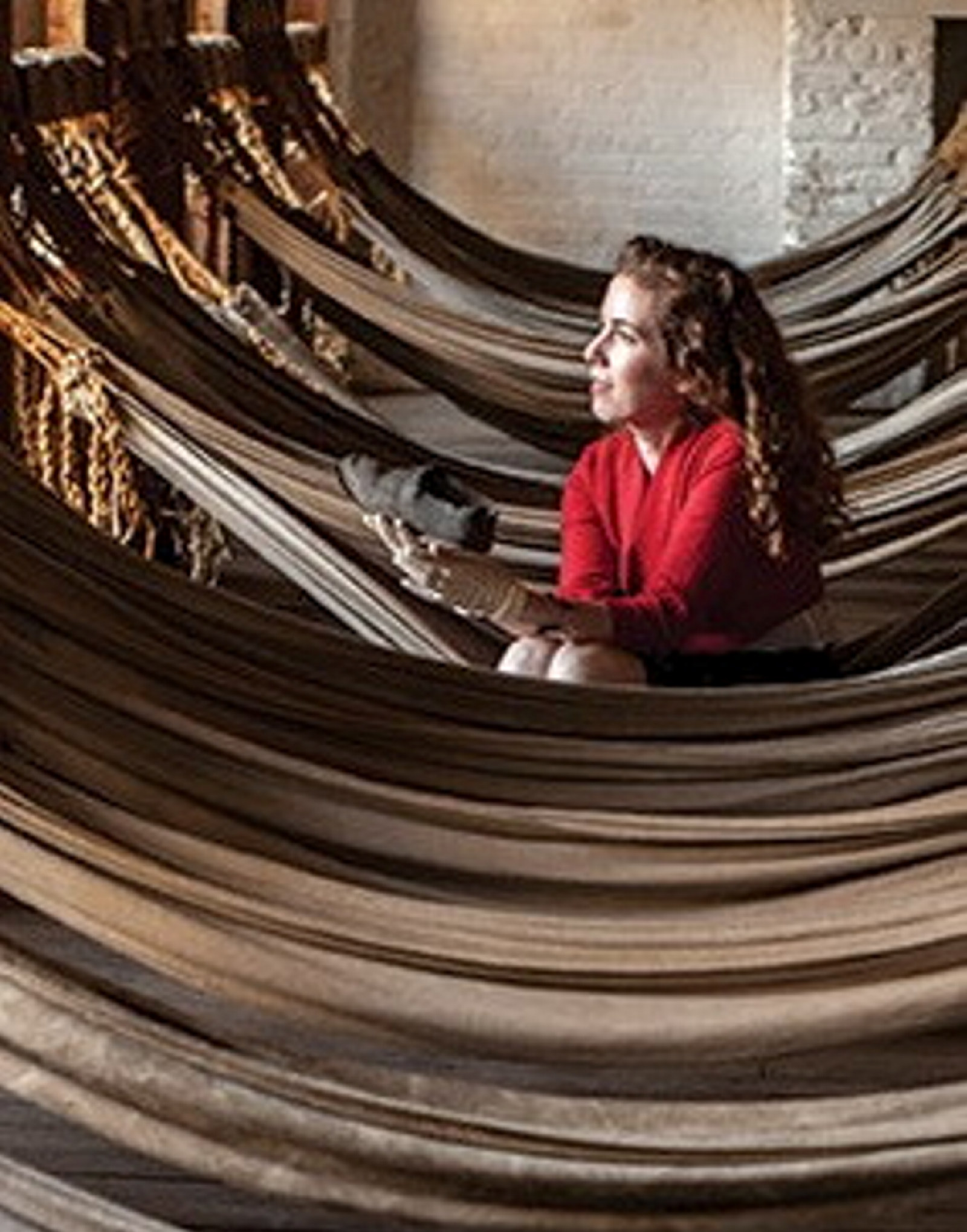1844 - Day in the life of a convict
After only a few decades, the use and abuse of the Hyde Park Barracks by as many as 50,000 convicts had left it fraying at the edges. These were the darkest days of all at the barracks – those left by 1844 were the worst of the worst, and with 900 men sleeping in the wards, every hammock was still occupied.1 The shiploads of new convicts had stopped arriving with the end of transportation in 1840, but ‘old hands’ still came in their hundreds, to attend trial at the court, to be flogged on the triangles, and to be transferred between penal settlements or places of assignment.
Deputy Superintendent John Horsey was appointed this year to replace the notorious Timothy Lane and his reign of terror. Under Lane’s watch, the barracks had descended into a dreaded place of brutality. Punishment had become the order of the day, and corruption and cruelty among convict officials had become entrenched. The place was filthy and squalid, and the convicts fought back with defiance and black market dealings.
By now, tens of thousands of convicts who had done their time had earned their tickets of leave, their Certificates of Freedom or their pardons, but those now left at the barracks were a motley rabble of mainly hardened criminals with multiple convictions, including those who simply couldn’t be reformed. The barracks also had to absorb hundreds of the worst characters previously banished to Norfolk Island and Cockatoo Island, and now returned to Sydney. Those who dared to speak out about the cracks in the barracks system risked their lives.
The barrack… certainly contained every evil in human shape – a perfect accumulation of vice and infamy.
Convict Charles Cozens, remembering 18402
Clothing
Small bars of soap were handed out each week, and the convicts used these to wash themselves and their clothing, with running water now supplied by a pipe coming into the barracks from Busby’s Bore in Hyde Park. Convict Charles Cozens quickly discovered why convicts dried the shirts on their backs – to prevent them from being stolen by other convicts.3
Find out more
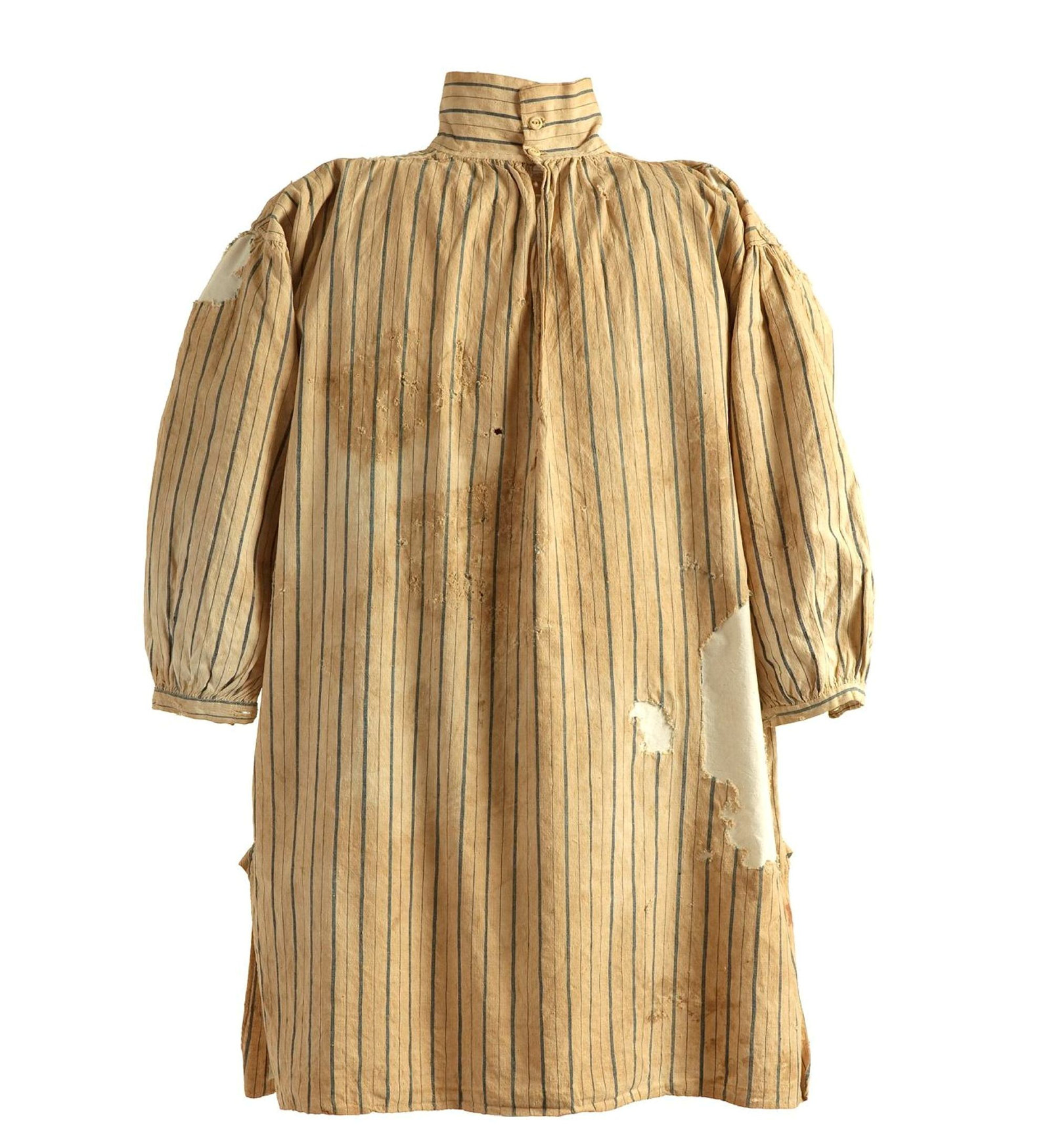
Convict Sydney
Convict Shirt
Known as a smish, kemesa or flesh-bag in the convict 'flash' slang language, this convict uniform shirt has been worn, torn, stained and patched
Breakfast
Bleary-eyed and miserable, the convicts were woken as usual by the yard bell, just before 6am, or earlier in summer. But breakfast was no longer served in the mess halls. Allowed to at least grab a chunk of bread, the gangs had to muster and march off to their worksites, where they would then receive their breakfast of hominy (corn porridge). Dinner (lunch) was also carted out to the worksites, but some convicts returned to the barracks to collect food for their mates.4
Hundreds of hungry mouths meant that the cooks had to use gigantic cooking cauldrons that could hold hundreds of litres. But large quantities of food didn’t necessarily mean that the convicts had enough to eat: convict rations were often stolen by the cooks and storemen, or by Superintendent Lane himself, to feed his pigs and goats.5 John Knatchbull found that the barracks rations left him hungry,6 and another man complained that they were forced to eat from the same dishes where the filthy shirts had been washed.7 Joseph Lingard thought that the bread was as ‘sour as a crab, as thodden as clay, and the very colour of a new-born brick …’8
In the Sydney Barracks … it was a living hell. The strongest ones took all there was to eat and the weakest died of hunger. It was a continual battle. What a sad life.
Convict François-Maurice Lepailleur, 18409
Work
When the bell rang after breakfast, just before 6am, or earlier in summer,10 the men gathered into their gangs of between 20 and 200 men,11 and were marched off by the overseers. Every weekday, except during heavy rain when they stayed in the barracks,12 there were gangs at work all around the town, but the men had a reputation for being lazy and resistant to orders and for malingering (faking illness) to be taken to hospital.
As they passed along, the chains clanking about their heels … the downcast countenances – and the whole appearance of the men, exhibited a truly painful picture.
Roger Therry, remembering the 1830s–40s13
And then there was the wayward broom gang, who scattered in all directions into the bush. They would regroup around a fire to boil kettles, wash clothes and make straw hats. The overseers didn’t know their whereabouts until they returned for muster.14 Other convict gangs working at the Flag Staff (now Observatory Hill) were pulled up for picking ladies’ pockets.15
Evening muster
By now, the ‘old hands’ knew all the tricks, and the barracks’ muster had become a game, with men calling in for absent mates when their names were called, or staying out of the barracks en masse.16 One chilly evening in June, gatekeepers Jeremiah Callaghan and John Bagnall found the men at the gates to be wearing extra clothing, and ordered them to be stripped of everything but their government slops. Several men refused and were thrown into the watchhouse, while another 200 cheered them on. Sentenced to be forwarded to Cockatoo Island, the watchhouse convicts apparently thanked the magistrates, saying they would rather go anywhere than be confined in the Hyde Park Barracks.17
In the wards
Usually, the convicts kept the candles in the wards burning all night, but the Superintendent didn’t mind, because it allowed the overseers to monitor the men through the recently made peepholes in the walls.18 A thick fog of smoke from hundreds of clay tobacco pipes filled the wards, except where the window panes had been smashed, allowing the smoke out and the evening breezes in. Some men guzzled ‘grog’ from the bottles that they had easily carried past the corrupt gatekeepers.19 Others played cards, whittled bone scraps into small objects, and perhaps even tattooed small designs onto their mate’s skin. Resourceful men patched and mended clothes and sewed on lost buttons, or Object: made straw hats to sell. In the corner, one pious convict named Thomas Bagnall might have quietly read the scriptures from Object: his Bible. The long evenings in the wards were perfect for singing ballads, and for gambling; many convicts liked to try their luck, using handmade gaming tokens and coins. Sometimes they played for high stakes – the Superintendent once caught some of them gambling £8, but they quickly jumped into their hammocks and pretended nothing had happened.20
Read more

Convict Sydney
Convict uniform buttons
Archaeologists found over 250 bone buttons, which were once attached to convict shirts, jackets and trousers, and then lost beneath the floors
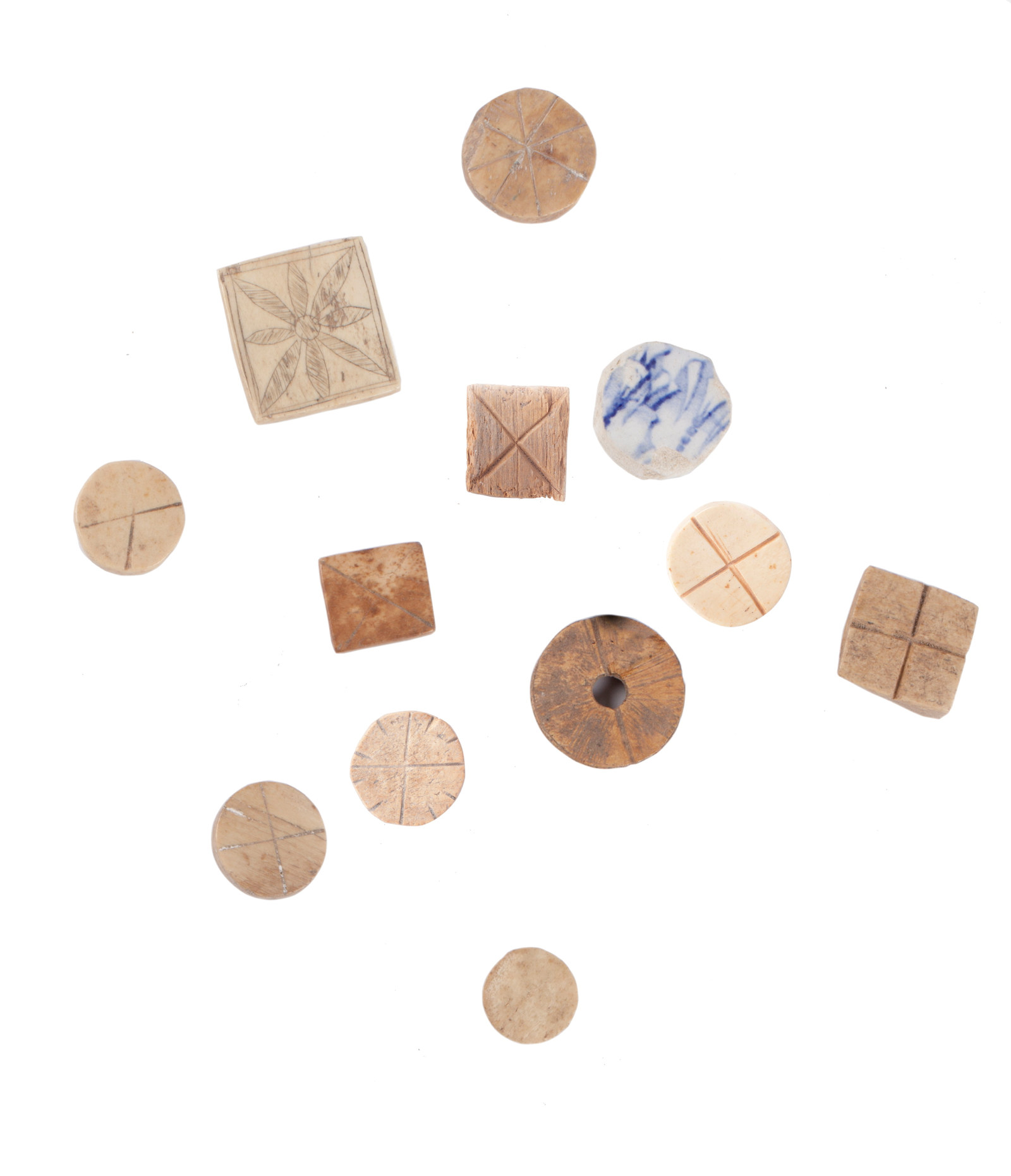
Convict Sydney
Convict gaming tokens
These bone, ceramic, and wooden gaming tokens appear to have been hand-carved by convicts from rubbish scraps and animal bones saved from their meals
... one night I was sitting down in the ward with one or two men gambling … Tossing halfpence …
Convict John Barker, 184421
Around all of this activity swarmed an infestation of rats, prowling about the floorboards, running along the hammock rails and ropes, and crawling into the convicts’ hammocks, looking for food. The blankets and hammocks were also infested with lice, and the blankets torn and dotted with moth holes.22
… in the night rats came by hundreds; they even came into the bed, crept in at our breast, under the bed-clothes, and out at the feet, like a pack of hounds, and biting at our noses and ears all through the night.
Convict Joseph Lingard, 184623
One evening, the superintendent feared the men would riot and called for the backup of 60 soldiers and eight mounted police. It was later found that the unrest had been caused by men who had been ordered to move into a ward infested with rats.24
Punishment
The barracks had become notorious for its brutal flogging punishment, used as the standard way to keep the convicts in line. The scourgers, like John Stone,25 who whipped the other convicts, received two ‘salaries’ – 3 shillings 6 pence per day from the government, as well as the coins passed to them by the convicts, as payment for them to ‘go easy’ with the cat-o’-nine-tails. But by now, the men were so accustomed to the lash that many were almost immune to its severity.
I have known as many as twenty-nine flogged on one single morning, till their backs were as red as a round of beef… I have seen men come in from their work, and bathe each other’s shirt out of the wounds on their backs, the shirt having grown in whilst at work.
Convict Joseph Lingard, 184626
Such barbarism drove some convicts to despair, violence and mental illness. Barracks clerk William Tucker even committed suicide in this year, presumably to escape the barracks’ brutality and his miserable existence.
At the side of the hospital, there is also the convict barracks called Hyde Park, a place of torment and pain for the poor miserable convicts. There cruelty and barbarism are dished out ...
Convict François-Maurice Lepailleur, 184027
Read more

Convict Sydney
Cat-o’-nine-tails
One of the most common forms of convict punishment was flogging (whipping) with a ‘cat-o’-nine-tails’
Escape
Convicts still resorted to the usual attempts at freedom, getting out of the solitary cells, the watchhouse, over the walls and even through the front gates. But now it was easy. David Chambers and his mate had been locked in a solitary cell together, but broke out and got over the wall, in the presence of four nightwatchmen in the yard,28 who clearly weren’t doing their job. Other convicts tricked a watchman to give them some water, and when he opened the door they busted out.29 The notorious ‘bolter’ Lawrence Kavanagh escaped the watchhouse and got over the wall wearing leg-irons, and later returned in disguise, with a pistol, to prowl around the barracks’ walls at night, trying to get a shot at Superintendent Lane.30
On chapel nights, Tuesday and Friday, while the Protestant convicts were attending prayers in the mess room, others escaped over the eastern wall.31 Under their convict slops, they were dressed up to the nines in blue jackets, moleskin trousers and white shirts.32 Some were caught halfway over, but many made it all the way, and with a few coins in their pockets, they wandered the dark streets of Sydney, looking for mischief. They were usually picked up at the pubs, but they were hard to identify, having shed their convict slops at the base of the wall.33
I used to put watchmen round the Barracks, but they were the same as the rest of the men, and went over themselves when they could; they were all tarred with the same brush.
Deputy Superintendent Timothy Lane, 184434
Some got out the easiest way of all – by bribing the convict staff. Principal messenger Prendergast possibly even became quite wealthy this way, flashing around his gold fob watch and chain.35 Convict John Barker paid almost a pound of bribes to one official who promised to get him out.36 And John Smith, the man trusted to call the muster each night, was sent out to Cockatoo Island for taking a watch and money from a man to whom he promised to give a false ticket of leave.37
Newspapers printed by ex-convicts complained in turn about the tyrannical conduct of government officials towards the defenceless, unhappy convicts at the barracks. But with so many men escaping and defying the rules, the barracks’ men were becoming harder for the superintendent to handle, and with so much corruption of the convict staff, how could he keep his establishment in order? The government denied that the crimes were mainly committed by barracks men, and blamed the increasing number of freed convicts who were falling back into their old dishonest ways.
At the heart of the public hysteria were two murders committed by barracks convicts – one by former navy captain John Knatchbull and the other by a group of barracks shoemakers, George Vigors, James Martin, Thomas Burdett and others, who had pistols and ammunition stashed away in the wards. Both Vigors and Knatchbull were hanged for these violent crimes. Over the years, hundreds of convicts like them had been executed for murder, bushranging and other unforgivable acts, and their corpses were usually carted to the Rum Hospital, next to the barracks, where they were dissected and studied.39 This was their final humiliation – these convicts were punished, even in death.
Read more
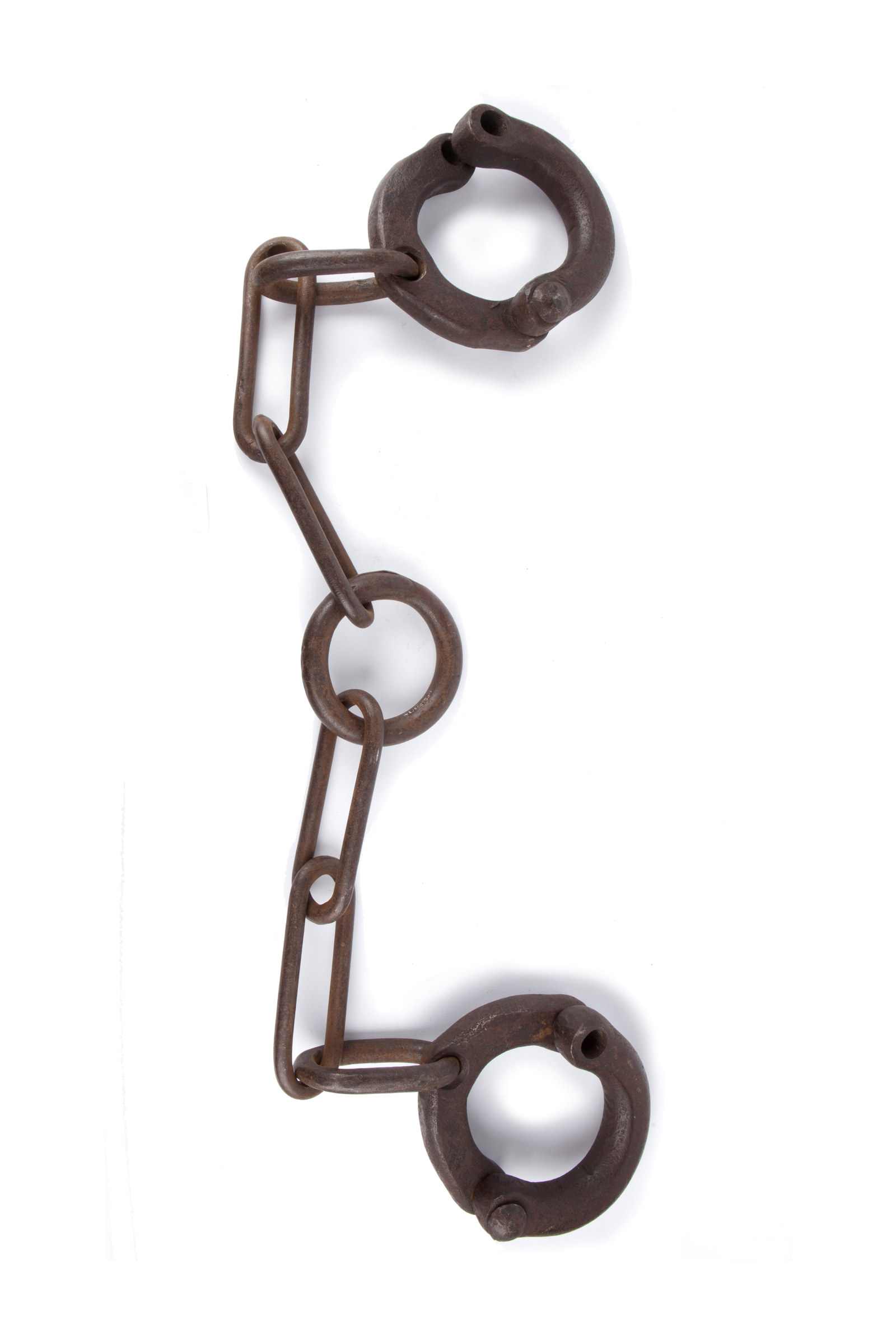
Convict Sydney
Leg irons, heavy
Known as darbies or slangs in the convict ‘flash’ slang language, leg irons came in various shapes and sizes
Bad behaviour
In 1844, Sydneysiders didn’t feel safe – a crime wave of street robberies, housebreaking and pickpocketing was now sweeping the town, and magistrates Innes and Browne were busy in the barracks’ court, sometimes hearing 30 cases in one day. Some newspapers complained that the crime was caused by barracks convicts and the gross mismanagement of the establishment, and that greater discipline was needed.
… a set of men such as those in Hyde Park Barracks, who are well known to be the most expert in crime of any in the three kingdoms...
Morning Chronicle, 184438
Footnotes
1. Principal Superintendent of Convicts to Colonial Secretary, 19 May 1846, Col Sec letters received SRNSW 4/2720.2
2. Charles Cozens, Adventures of a Guardsman, Richard Bentley, London, 1848, p116.
3. Cozens, pp118–19.
4. Minutes of Evidence, p39.
5. Knatchbull, p104.
6. Knatchbull, p103.
7. ‘Humanitas’ to Governor Gipps, 12 December 1842, SRNSW 4/2602, p16.
8. Joseph Lingard, Narrative of a journey to and from New South Wales, Chapel-en-le-Frith, s.n., 1846, pp23–4.
9. Land of a thousand sorrows: the Australian prison journal, 1840–1842, of the exiled Canadien patriote, Francois-Maurice Lepailleur, F Murray Greenwood (trans and ed), Melbourne University Press, Carlton, Vic., 1980, p24.
10. Minutes of Evidence, p39.
11. Cozens, p118.
12. Cozens, p118.
13. Roger Therry, Reminiscences of thirty years’ residence in New South Wales and Victoria, Sampson Low, Son, and Co., London, 1863, 2nd edn, pp41–2.
14. Minutes of Evidence, p30.
15. Minutes of Evidence, p30.
16. Minutes of Evidence, p38.
17. Weekly Register, 8 June 1844, p624.
18. Minutes of Evidence, p54.
19. Minutes of Evidence, p38.
20. Minutes of Evidence, p48.
21. Minutes of Evidence, p37.
22. Principal Superintendent of Convicts to Colonial Secretary, 19 May 1846, Col Sec letters received SRNSW 4/2720.2
23. Lingard, p24.
24. SMH, 25 October 1843, p3.
25. See Minutes of Evidence, pp55–6.
26. Lingard, p25.
27. Land of a thousand sorrows, pp59–60.
28. Sydney Herald, 6 May 1840, p2.
29. SH, 29 January 1842, p2.
30. SH, 16 February 1842, p3.
31. Minutes of Evidence, pp37–8, 63.
32. Minutes of Evidence, p31.
33. Minutes of Evidence, p55.
34. Minutes of Evidence, p47.
35. Minutes of Evidence, p38.
36. Minutes of Evidence, p37.
37. Minutes of Evidence, p37.
39. Fiona Starr, ‘The ‘Sidney Slaughter House’: Convict life, illness and death at the General ‘Rum’ Hospital, Sydney, 1811-1848’, Health & History, 2017 (forthcoming).
38. Morning Chronicle, 12 June 1844, p2.
Published on
Related
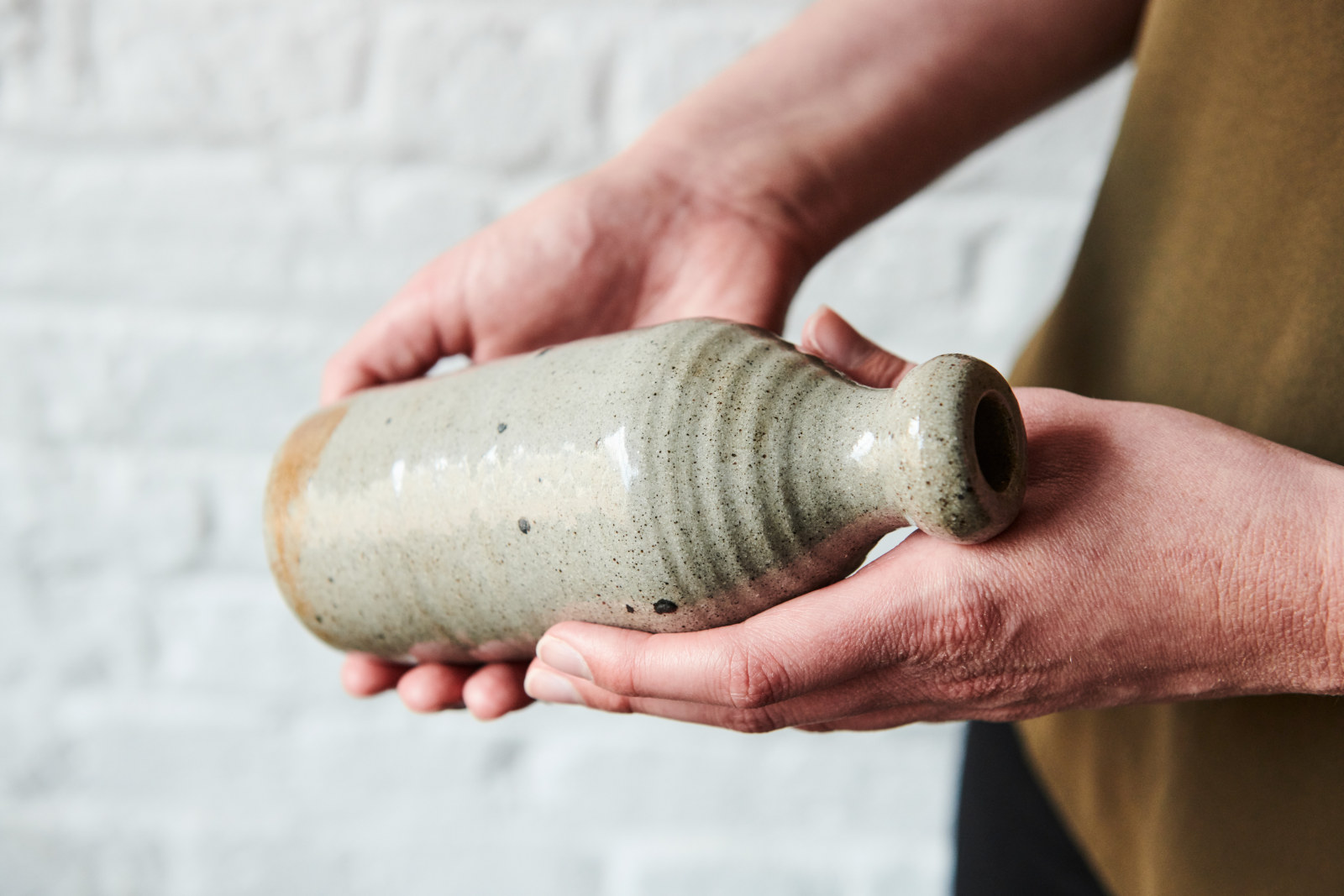
Learning resources
Explore our range of online resources designed by teachers to support student learning in the classroom or at home
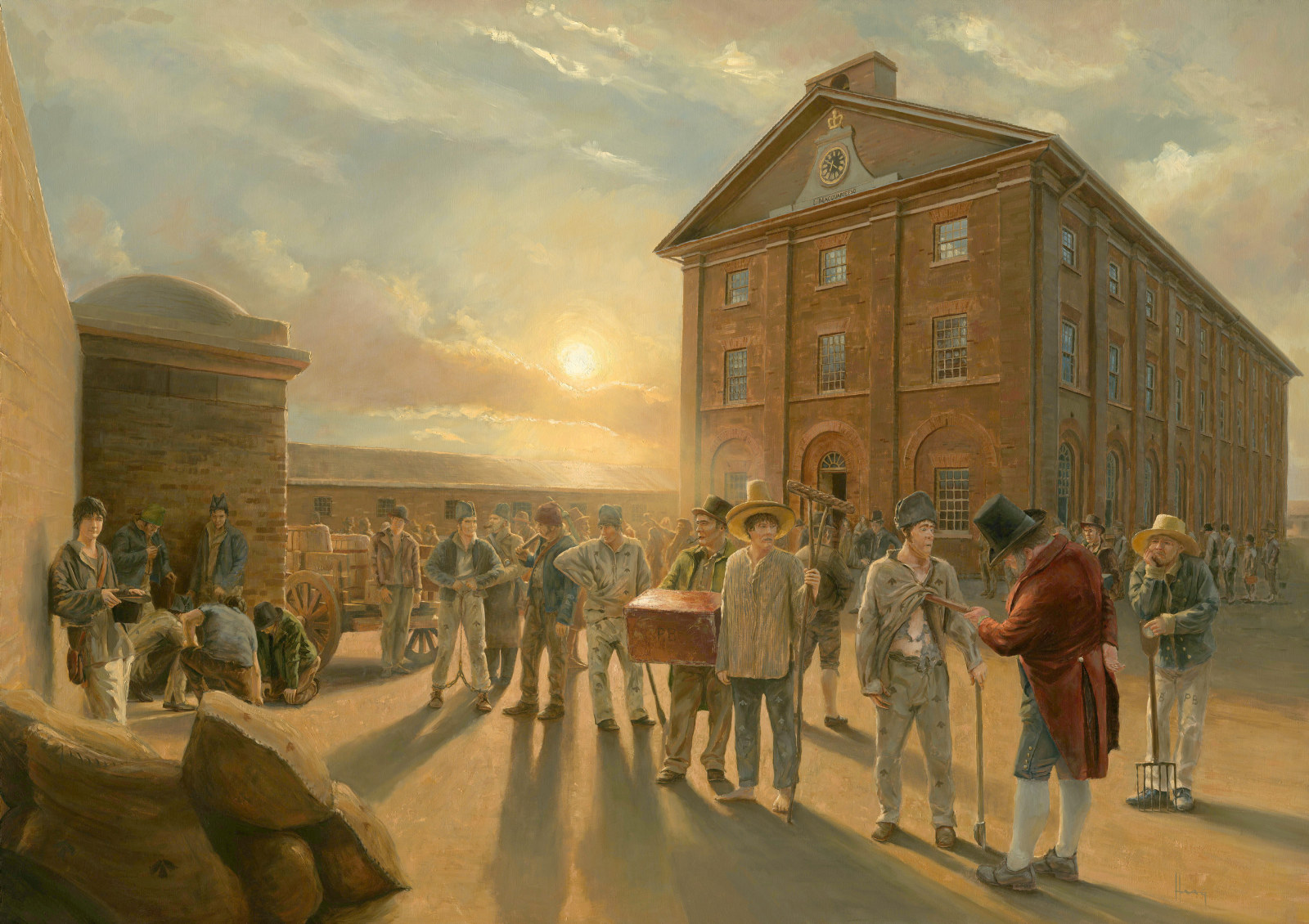
Convict Sydney
Convict Sydney
From a struggling convict encampment to a thriving Pacific seaport, a city takes shape.
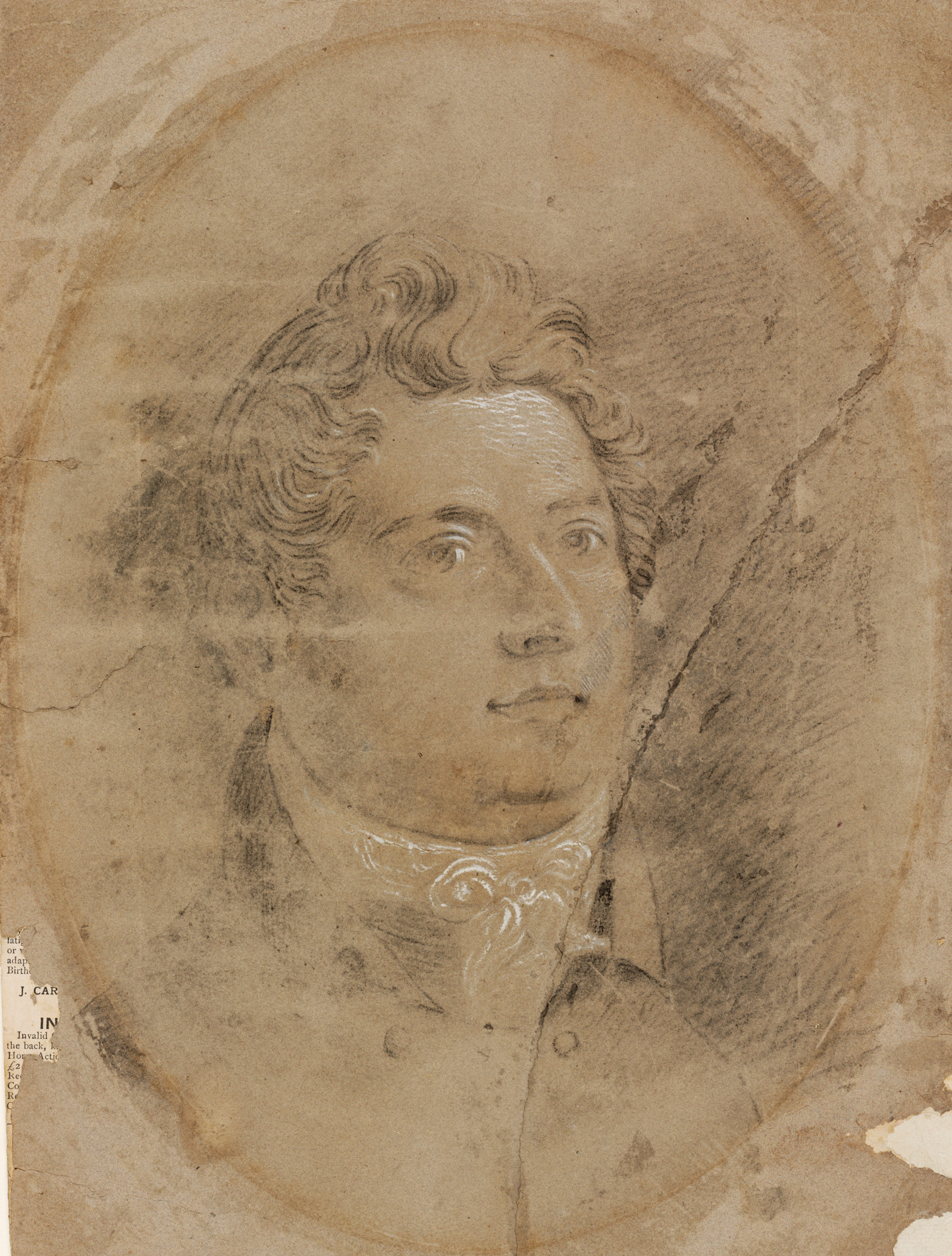
Resource
How were convicts rewarded for good behaviour?
While some convicts broke the rules and were punished, most of them worked hard and tried to stay out of trouble
